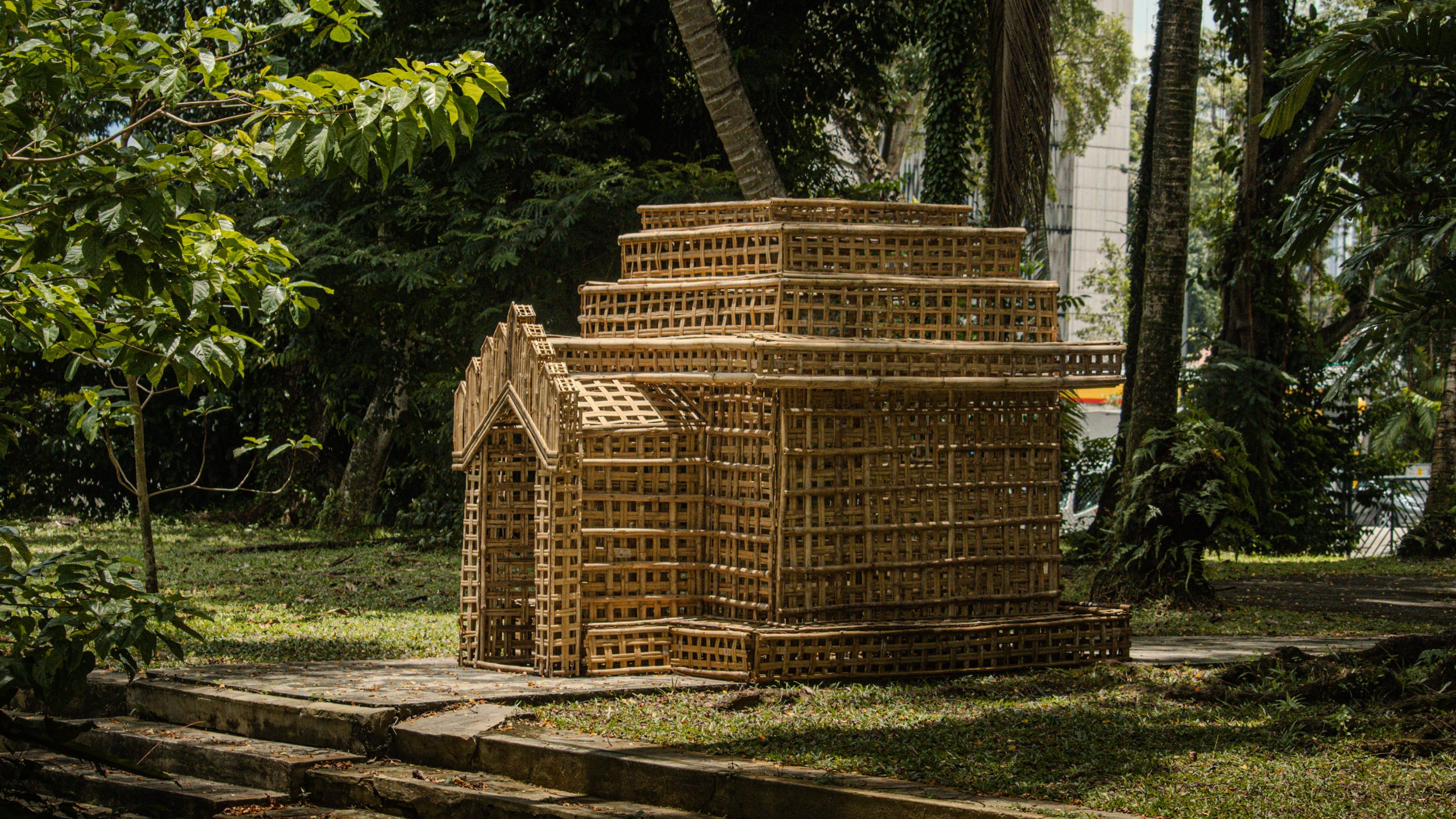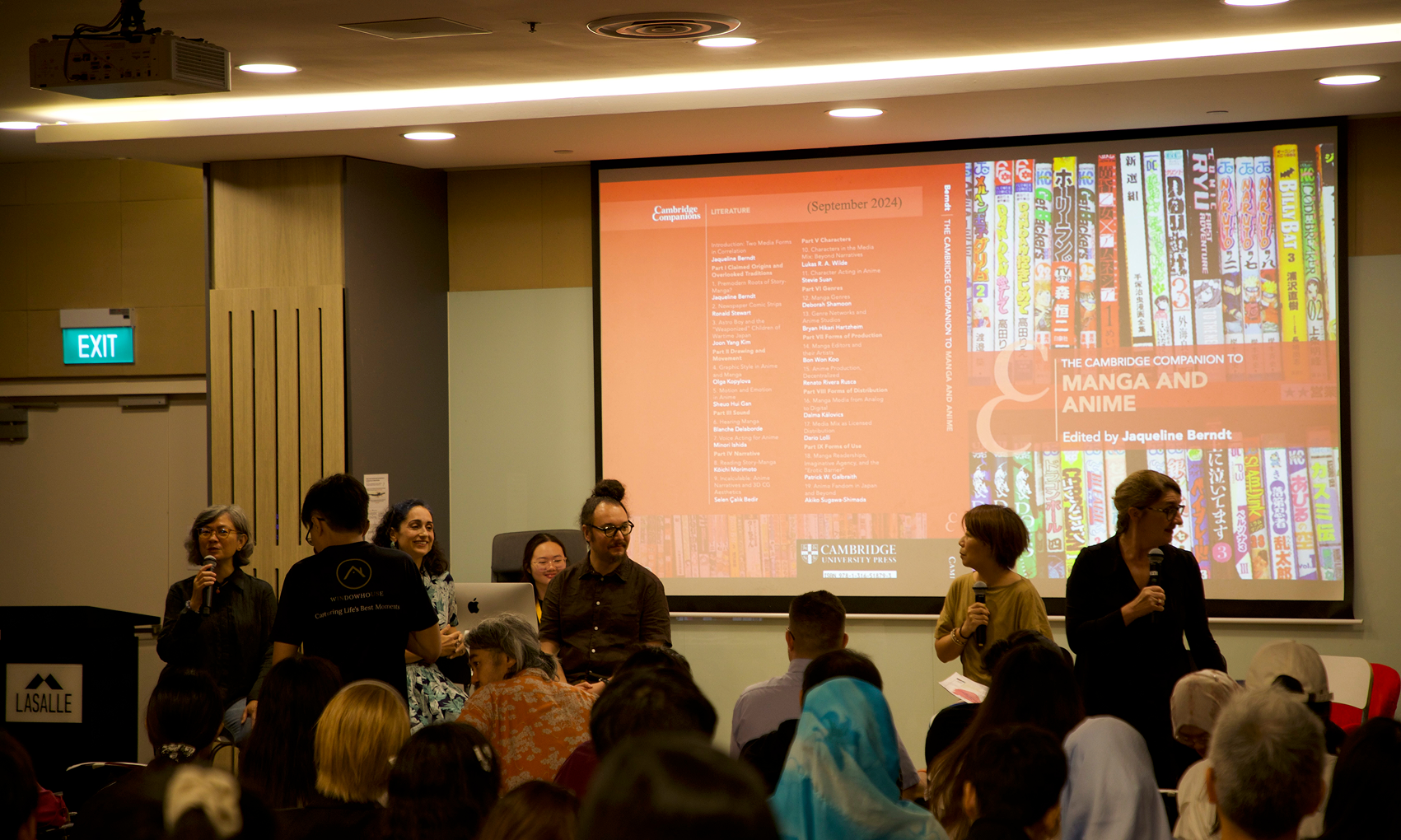Journal and book publications
Championing art in art therapy training: A multidimensional art collaboration in Southeast Asia
Art therapy is a dynamic discipline that readily embraces opportunities to further develop and expand practices and applications. This can be observed in art therapy training pedagogy, initiatives, and projects. For those art therapy training programs that are new and/or are being developed in regions around the world, it is important that their contributions to the field are acknowledged and shared with a global audience. Art-based methodology supports the reflexive stance of this preliminary investigation and documents this initial phase of a larger research initiative. This article serves to highlight an overview of a cross-border, cross-cultural collaboration that led to a two-part digital experiential workshop between a Bali-based artist and an artist/art therapist, involving his postgraduate art therapy students from LASALLE College of the Arts, Singapore. The art in art therapy is championed with a focus on integrating technologies with one’s art practice, one’s artist identity, and one’s art therapy practice.
Citation:
Lay, Ronald P.M.H.. ''Championing art in art therapy training: A multidimensional art collaboration in Southeast Asia.'' Canadian Journal of Art Therapy: Research, Practice and Issues, vol. 33, no. 2, 2020, pp. 80-88, doi: https://doi.org/10.1080/26907240.2020.1844437.
An Evening at the Ballroom: Whatever Happened to Televanilla?
This article re-introduces the submerged 1968 performance Televanilla, an improvisational theatre dance piece that deployed analogue image-processing tools to establish a dialogical system with technological media. It argues that the performance anticipated principal concepts and strategies for real-time human-machine interaction, and the "virtual" representation of participants in mediated art environments. Although the performance received reviews from renowned critics in prominent New York newspapers and magazines, it disappeared from the historical records almost entirely. The article provides a critical evaluation of the artists' conceptual and technical approaches towards the deployment of analogue media technology for creating an early example of audience participation and human-machine interaction in mediated artworks. This analysis is complemented by an evaluation of contemporary reviews of the performance to illustrate to what degree the critical reception at the time was prepared to appraise the concept of technology-based interactivity through a human-machine interface in artworks appropriately.
Citation:
Muench, Wolfgang. ''An Evening at the Ballroom: Whatever Happened to Televanilla?'', ScienceOpen. RE:SOUND 2019: Proceedings of the 8th International Conference on Media Art, Science, and Technology, Aalborg, Denmark 08/2019, edited by Søndergaard, Morten, et al, 2020, pp. 258-267, doi: http://dx.doi.org/10.14236/ewic/RESOUND19.39.
Stimulating Thoughts Rather Than Appetite: On TAKAHATA Isao’s Animation Aesthetics
In this paper, I argue that Takahata’s works possess aesthetic qualities that have not been addressed sufficiently, partly due to the lack of an overall recurring theme and specific visual traits that allow viewers to easily identify with the characters. The impact of Takahata’s work rests on their narrative meaning rather than centering on the personalities and visual charm of the key characters. The meaning stays within the animation itself, rather than branching out through merchandising or fan activity. Takahata contested the way viewers often engage with the animation medium in a popular context. He went beyond the light-hearted genre framework to produce narratives that do not lead to happy, emotionally satisfying endings. Neither did he glorify the enchanted transformative potential of the animatic image. To address his aesthetic qualities in context and examine his construction of character and their worlds, this paper analyzes his works, including Heidi, Girl of the Alps (1974), The Tale of Princess Kaguya (2013), Grave of the Fireflies (1988), and Only Yesterday (1991). Through close examination of selected sequences, Takahata’s challenge to the norms of anime structure and aesthetics are shown to be a part of his creative production process that resulted in the distinctive impact of his work.
Citation:
Gan, Sheuo Hui . ''Stimulating Thoughts Rather Than Appetite: On TAKAHATA Isao's Animation Aesthetics.'' The Japanese Journal of Animation Studies, vol. 21, no. 1, 2020, pp. 111-125, ISBN / ISSN: 1347-300X.
Consolidating containment: A visual exposé
Art therapists have their own art and art-making available to them as an important resource for personal and professional containment, reflection and perseverance. Engaging in and with their own art-making and images can lead to further insights, and can serve as a reservoir to deposit complex reactions, ruminations and responses to a global pandemic. This article surfaces one artist/art therapist’s art-making through a visual exposé of his perspective on containment of circumstances that are essentially beyond his control. Art-making and self-reflection are championed as effective resources to sustain community even during periods of mandated isolation and distancing.
Citation:
Lay, Ronald P.M.H.. ''Consolidating containment: A visual exposé.'' JoCAT: Journal of the Creative Arts Therapies, vol. 15, no. 1, 2020, pp. 17-22, ISBN / ISSN: 2652-9459.








